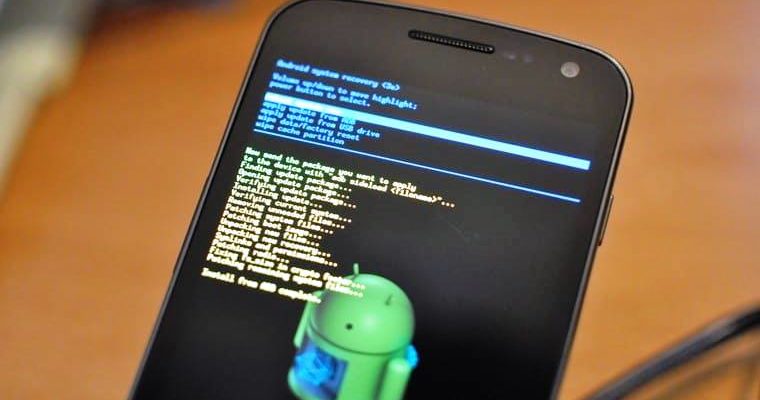Check Point Research reports that Glupteba has returned to the top ten list for the first time since July 2022. Qbot overtook Emotet as the most prevalent malware in December, while android malware Hiddad made a comeback
Our latest Global Threat Index for December 2022 saw Glupteba Malware, an ambitious blockchain-enabled Trojan botnet, return to the top ten list for the first time since July 2022, moving into eighth place. Qbot, a sophisticated Trojan that steals banking credentials and keystrokes, overtook Emotet to be the most prevalent malware after its return last month, impacting 7% of organizations worldwide. Meanwhile, android malware Hiddad made a comeback, and education continued to be the most impacted industry worldwide.
RELATED: Avoid falling victim to Moneymonger malware on loan apps, CERRT.NG warns
Although Google managed to cause major disruption to Glupteba operations in December 2021, it seems to have sprung back into action. As a modular malware variant, Glupteba can achieve various objectives on an infected computer. The botnet is often used as a downloader and dropper for other malware. This means that a Glupteba infection could lead to a ransomware infection, data breach, or other security incidents. Glupteba is also designed to steal user credentials and session cookies from infected machines. This authentication data can be used to gain access to a user’s online accounts or other systems, enabling the attacker to steal sensitive data or take other action using these compromised accounts. Finally, the malware is commonly used to deploy cryptomining functions on its target, draining a computer’s resources by using them to mine blocks.
In December, we also saw Hiddad make the top three mobile malware list for the first time in 2022. Hiddad is an ad-distributing malware, targeting android devices. It repackages legitimate apps and then releases them to a third-party store. Its main function is to display ads, but it can also gain access to key security details built into the OS.
The overwhelming theme from our latest research is how malware often masquerades as legitimate software to give hackers backdoor access to devices without raising suspicion. That is why it is important to do your due diligence when downloading any software and applications or clicking on links, regardless of how genuine they look.
Our research also revealed that “Web Server Exposed Git Repository Information Disclosure” was the most common exploited vulnerability, impacting 46% of organizations globally, followed by “Web Servers Malicious URL Directory Traversal” with 44% of organizations impacted worldwide. “Command Injection Over HTTP” is the third most used vulnerability, with a global impact of 43%.
Top malware families
Globally, Qbot was the most prevalent malware last month with an impact of 7% worldwide organizations, followed by Emotet with a global impact of 4% and XMRig with a global impact of 3%.
In Nigeria, Qbot was the most widespread malware this month impacting 20.00% of organisations in the country, followed by Ramnit with 11.67% and Emotet with 10.00%.
- Qbot – Qbot AKA Qakbot is a banking Trojan that first appeared in 2008. It was designed to steal a user’s banking credentials and keystrokes. Often distributed via spam email, Qbot employs several anti-VM, anti-debugging, and anti-sandbox techniques to hinder analysis and evade detection.
- Ramnit– Ramnit is a modular banking Trojan first discovered in 2010. Ramnit steals web session information, giving its operators the ability to steal account credentials for all services used by the victim, including bank accounts, and corporate and social networks accounts. The Trojan uses both hardcoded domains as well as domains generated by a DGA (Domain Generation Algorithm) to contact the C&C server and download additional modules.
- Emotet – Emotet is an advanced, self-propagating and modular Trojan that was once used as a banking Trojan, and currently distributes other malware or malicious campaigns. Emotet uses multiple methods for maintaining persistence and evasion techniques to avoid detection and can be spread via phishing spam emails containing malicious attachments or links.
Top Attacked Industries Globally
Last month, Education/Research remains the most attacked industry globally, followed by Government/Military and then Healthcare.
- Education/Research
- Government/Military
- Healthcare
Top exploited vulnerabilities
In December, “Web Server Exposed Git Repository Information Disclosure” was the most common exploited vulnerability, impacting 46% of organizations globally, followed by “Web Servers Malicious URL Directory Traversal” with 44% of organizations impacted worldwide. “Command Injection Over HTTP” is the third most used vulnerability, with a global impact of 43%.
- ↑ Web Server Exposed Git Repository Information Disclosure – An information disclosure vulnerability has been reported in Git Repository. Successful exploitation of this vulnerability could allow an unintentional disclosure of account information.
- ↓ Web Servers Malicious URL Directory Traversal (CVE-2010-4598,CVE-2011-2474,CVE-2014-0130,CVE-2014-0780,CVE-2015-0666,CVE-2015-4068,CVE-2015-7254,CVE-2016-4523,CVE-2016-8530,CVE-2017-11512,CVE-2018-3948,CVE-2018-3949,CVE-2019-18952,CVE-2020-5410,CVE-2020-8260) – There exists a directory traversal vulnerability On different web servers. The vulnerability is due to an input validation error in a web server that does not properly sanitize the URI for the directory traversal patterns. Successful exploitation allows unauthenticated remote attackers to disclose or access arbitrary files on the vulnerable server.
- ↑ Command Injection Over HTTP (CVE-2021-43936,CVE-2022-24086) – A command Injection over HTTP vulnerability has been reported. A remote attacker can exploit this issue by sending a specially crafted request to the victim. Successful exploitation would allow an attacker to execute arbitrary code on the target machine.
- ↓ HTTP Headers Remote Code Execution (CVE-2020-10826,CVE-2020-10827,CVE-2020-10828,CVE-2020-13756) – HTTP headers let the client and the server pass additional information with an HTTP request. A remote attacker may use a vulnerable HTTP Header to run arbitrary code on the victim machine,
- ↑MVPower DVR Remote Code Execution – A remote code execution vulnerability exists in MVPower DVR devices. A remote attacker can exploit this weakness to execute arbitrary code in the affected router via a crafted request.
- ↓ Dasan GPON Router Authentication Bypass (CVE-2018-10561) – An authentication bypass vulnerability exists in Dasan GPON routers. Successful exploitation of this vulnerability would allow remote attackers to obtain sensitive information and gain unauthorized access into the affected system
- ↔ PHP Easter Egg Information Disclosure – An information disclosure vulnerability has been reported in the PHP pages. The vulnerability is due to incorrect web server configuration. A remote attacker can exploit this vulnerability by sending a specially crafted URL to an affected PHP page.
- ↑Microsoft Windows HTTP.sys Remote Code Execution (MS15-034: CVE-2015-1635) – A Vulnerability in HTTP.sys in certain versions of Microsoft Windows OP tracked as CVE-2015-1635. Successful exploitation would allow threat actors to execute arbitrary HTTP requests, causing buffer overflow, and possibly gaining SYSTEM privileges..
- ↓ WordPress portable-phpMyAdmin Plugin Authentication Bypass (CVE-2012-5469) – An authentication bypass vulnerability exists in WordPress portable-phpMyAdmin Plugin. Successful exploitation of this vulnerability would allow remote attackers to obtain sensitive information and gain unauthorized access into the affected system.
- ↓ PHPUnit Command Injection (CVE-2017-9841) – A command injection vulnerability exists in PHPUnit. Successful exploitation of this vulnerability would allow remote attackers to execute arbitrary commands in the affected system.
Top Mobile Malwares
Last month Anubis remained the most prevalent Mobile malware, followed by Hiddad and AlienBot.
- Anubis – Anubis is a banking Trojan malware designed for Android mobile phones. Since it was initially detected, it has gained additional functions including Remote Access Trojan (RAT) functionality, keylogger and audio recording capabilities as well as various ransomware features. It has been detected on hundreds of different applications available in the Google Store.
- Hiddad – Hiddad is an Android malware which repackages legitimate apps and then releases them to a third-party store. Its main function is to display ads, but it can also gain access to key security details built into the OS.
- AlienBot – AlienBot is a banking Trojan for Android, sold underground as Malware-as-a-Service (MaaS). It supports keylogging, dynamic overlays for credentials theft as well as SMS harvesting for 2FA bypass. Additional remote-control capabilities are provided using a TeamViewer module.
Check Point’s Global Threat Impact Index and its ThreatCloud Map is powered by Check Point’s ThreatCloud intelligence. ThreatCloud provides real-time threat intelligence derived from hundreds of millions of sensors worldwide, over networks, endpoints and mobiles. The intelligence is enriched with AI-based engines and exclusive research data from Check Point Research, the intelligence and research Arm of Check Point Software Technologies.
COVER IMAGE: Voice&Data































